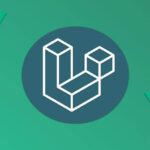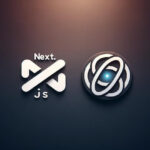Looking for an in-depth free course to developing native iOS and Android apps? “Flutter & Dart The Complete Guide” is a great free video course to start. This guide will teach you all you need to know about using Flutter and Dart to build powerful, high-performance mobile apps. This book will help you whether you’re new to app development or want to improve your skills. And, best of all, it’s all free!
Download the free course on “Flutter & Dart The Complete Guide” and discover how to create high-performance mobile apps for iOS and Android using Flutter and Dart. With over 30 hours of comprehensive content, this course is designed for beginners and experienced developers alike, covering everything from basic setup instructions to advanced concepts like state management, user authentication, and more.
What you will learn:
- Learn Flutter and Dart from the ground up, step-by-step
- Build engaging native mobile apps for both Android and iOS
- Use features like Google Maps, the device camera, authentication and much more!
- Learn how to upload images and how to send manual and automated push notifications
- Become an advanced developer by diving deeply into Flutter & Dart, rather than stopping after learning just the basics.
By following this complete guide on Flutter and Dart, you’ll gain a solid understanding of these technologies and be equipped with the skills needed to build high-quality mobile applications. Start your journey today!
Description of Flutter & Dart The Complete Guide:
Looking for a comprehensive guide on building stunning mobile apps for iOS and Android? Look no further than “Flutter & Dart – The Complete Guide“, which includes a free course you can download! With over 30+ hours of comprehensive content, this course is the ultimate resource for anyone who wants to build beautiful, responsive, and feature-rich applications from scratch using Flutter and Dart.
Why Choose Flutter?
- Developed by Google, Flutter allows you to learn one language (Dart) and build beautiful native mobile apps in no time
- Write the code only once and ship your apps both to the Apple App Store and Google Play
- Use the rich widget suite Flutter provides to add common UI elements or build your own custom widgets
What You’ll Learn key points:
- Detailed setup instructions for both macOS and Windows
- A thorough introduction to Flutter, Dart, and the concept behind widgets
- Debugging tips & tricks
- Page navigation with tabs, side drawers, and stack-based navigation
- State management solutions
- Handling and validating user input
- Connecting your Flutter app to backend servers by sending HTTP requests
- User authentication
- Adding Google Maps
- Using native device features like the camera
- Adding beautiful animations & page transitions
- Image upload
- Push notifications – manual approach and automated
- And much more!
Course Highlights:
On-Demand, Video-Based Learning: An immersive experience with practical examples and demo apps to help you develop your skills at your own pace
Lifetime Access: Revisit topics and refresh your knowledge anytime
Regularly Updated: The course has been updated multiple times in the past to ensure it stays up-to-date with the latest industry standards
This course is designed to be accessible to everyone, regardless of their programming background. Whether you’re a complete beginner or an experienced developer looking to expand your skillset, this course will guide you through each step of the process, ensuring you gain a deep understanding of the fundamentals and advanced concepts.
Enroll in “Flutter & Dart The Complete Guide” today and start building amazing apps for the iOS and Android platforms! Plus, you can download the course for free and unlock your potential in mobile app development.
Requirements
- Basic programming language will help but is not a must-have
- You can use either Windows, macOS or Linux for Android app development – iOS apps can only be built on macOS though
- NO prior iOS or Android development experience is required
- NO prior Flutter or Dart experience is required – this course starts at zero!
Who this course is for:
- Beginner and experienced developers who are interested in diving into mobile app development using one language for both platforms
- Experienced iOS or Android developers who want to build cross-platform (iOS + Android) apps with one single programming language
Course Content of Flutter & Dart The Complete Guide Course:
Introduction
- Welcome To This Course!
- What Is Flutter?
- Flutter uses Dart!
- One Platform
- Flutter Setup – Overview
- Windows Setup
- macOS Setup
- Project Creation & Setting Up a Code Editor for Flutter
- Development
- Running a First Flutter App
- Understanding Material Design
- About This Course
- Course Resources (Code Snapshots, Community & Slides)
Flutter & Dart Basics I – Getting a Solid Foundation [ROLL DICE]
- Module Introduction
- Analyzing A New Flutter Project
- Form Dart To Machine Code
- How Programming Languages Work
- Starting From Scratch: Understanding Functions
- Importing Features From Packages
- How Flutter Apps Start
- Knowledge Check: Flutter & Dart Basics v
- Understanding Widgets
- Using a First Widget & Passing Values to Functions
- Positional & Named Arguments
- Deep Dive: Position & Named Arguments
- Combining Multiple Widgets
- Understanding “const” Values
- Building More Complex Widget Trees
- Understanding Value Types
Configuring Widgets & Understanding Objects
- Working with “Configuration Objects” (Non-Widget Objects)
- Generics, Lists & Adding Gradient Colors
- How To Configure Widgets & Objects
- Practice: Styling Text
- Onwards to Custom Widgets: Why Do You Need Them?
- Understanding Classes
- Building Custom Widgets
- Working with Constructor Functions
- Splitting Code Across Files
- Practice: Create a Custom Widget
- Introducing Variables
- Variables & Types – Combining Two Key Concepts
- “final” & “const” – Special Kinds Of “Variables”
- Instance Variables (Properties) & Configurable Widgets
- Practice: Reusable Widgets & Constructor Functions
- Displaying Images & Using Multiple Constructor Functions
- Adding Buttons & Using Functions As Values
- Styling Buttons & Working with Padding
- How NOT To Build Interactive Widgets
- Introducing Stateful Widgets
- Generating Random Numbers
- Module Summary
Flutter & Dart Basics II – Fundamentals Deep Dive [QUIZ APP]
- Module Introduction
- A Challenge For You!
- Challenge Solution 1/2 – Creating a Widget
- Challenge Solution 2/2 – Working with More Widgets
- Adding Icons to Buttons
- Adding Transparency to Widgets
- Repetition & Exercise: Adding a Stateful Widget
- Rendering Content Conditionally
- Accepting & Passing Functions as Values
- The “initState” Method
- Deep Dive: Flutter’s (Stateful) Widget Lifecycle
- Using Ternary Expressions & Comparison Operators
- Understanding “if” Statements
- Using “if” Statements In Lists
- if Statements & Comparison Operators
- Adding a Data Model & Dummy Data
- Configuring a Column
- Creating a Reusable, Custom Styled Button
- Accessing List Elements & Object Properties
- Mapping Lists & Using the Spread Operator
- Alignment, Margin & Padding
- Mutating Values in Memory
- Managing The Questions Index As State
- More on Button Styling
- Using Third-Party Packages & Adding Google Fonts
- Passing Data via Functions Across Widgets
- More Conditions
- Getting Started with the Results Screen
- Passing Data to the Results Screen
- Introducing Maps & “for” Loops
- Using “for” Loops In Lists
- Accessing Map Values & Using “Type Casting”
- Combining Columns & Rows
- Expanded To The Rescue!
- Filtering &Analyzing Lists
- Making Content Scrollable with SingleChildScrollView
- Time to Practice: Flutter Basics v
- Beyond the Basics: Optional, Important Dart Features
- Module Summary
Debugging Flutter Apps
- Module Introduction
- The Starting Project & A Problem
- Understanding Error Messages
- Debugging Apps & Using “Debug Mode”
- Working with the Flutter DevTools
- Running the App on Real iOS or Android Devices
Adding Interactivity, More Widgets & Theming [EXPENSE TRACKER]
- Module Introduction
- Starting Setup & Repetition Time!
- Adding an Expense Data Model with a Unique ID & Exploring Initializer Lists
- Introducing Enums
- Creating Dummy Data
- Efficiently Rendering Long Lists with ListView
- Using Lists Inside Of Lists
- Creating a Custom List Item with the Card & Spacer Widgets
- Using Icons & Formatting Dates
- Setting an AppBar with a Title & Actions
- Adding a Modal Sheet & Understanding Context
- Handling User (Text) Input with the TextField Widget
- Getting User Input on Every Keystroke
- Letting Flutter do the Work with TextEditingController
- Time to Practice: Adding a New Input
- Exercise Solution
- Closing The Modal Manually
- Showing a Date Picker
Working with “Futures” for Handling Data from the Future
- Adding a Dropdown Button
- Combining Conditions with AND and OR Operators
- Validating User Input & Showing an Error Dialog
- Saving New Expenses
- Creating a Fullscreen Modal
- Using the Dismissible Widget for Dismissing List Items
- Showing & Managing “Snackbars”
- Getting Started with Theming
- Setting & Using a Color Scheme
- Setting Text Themes
- Using Theme Data in Widgets
- Adding Dark Mode
- Using Another Kind of Loop (for-in)
- Adding Alternative Constructor Functions & Filtering Lists
- Adding Chart Widgets
- Module Summary
Building Responsive and Adaptive User Interfaces for Expense Tracker App:
- Module Introduction
- What is “Responsiveness”?
- Locking the Device Orientation
- Updating the UI based on the Available Space
- Understanding Size Constraints
- Handling Screen Overlays like the Soft Keyboard
- Understanding “Safe Areas”
- Using the LayoutBuilder Widget
- Building Adaptive Widgets
- Module Summary
Flutter & Dart Internals [TODO APP]
- Module Introduction
- Three Trees: Widget Tree, Element Tree & Render Tree
- How The UI Is Updated
- Refactor & Extract Widgets To Avoid Unnecessary Builds
- Understanding Keys – Setup
- Which Problem Do Keys Solve?
- Understanding & Using Keys
- Mutating Values in Memory & Making Sense of var, final & const
Building Multi-Screen Apps & Navigating Between Screens [MEALS APP]
- Module Introduction
- Project Setup
- Using a GridView
- Widgets vs Screens
- Displaying Category Items on a Screen
- Making any Widget Tappable with InkWell
- Adding Meals Data
- Loading Meals Data Into a Screen
- Adding Cross-Screen Navigation
- Passing Data to the Target Screen
- Introducing the Stack Widget
- Improving the MealItem Widget
- Adding Navigation to the MealDetails Screen
- Improving the MealDetails Screen
- Adding Tab-based Navigation
- Passing Functions Through Multiple Layers of Widgets (for State Management)
- Managing App-wide State & Data
- Adding a Side Drawer
- Closing the Drawer Manually
- Adding a Filter Item
- Replacing Screens (Instead of Pushing)
- Adding More Filter Options
- Returning Data When Leaving a Screen
- Reading & Using Returned Data
- Applying Filters
- An Alternative Navigation Pattern: Using Named Routes
Building App-wide State Management with Riverpod in Meals App
- Module Introduction
- What is the State Management Problem?
- Installing Riverpod Solution
- How Riverpod Works for State Management
- Creating a Provider for State Management
- Using the Provider in the App
- Creating Complex StateNotifier Provider
- Managing Favorites with the FavoritesProvider
- Triggering a Notifier Method in the Provider
- Getting Started with Another Provider
- Combining Local & Provider-managed State
- Outsourcing State Into The Provider
- Connecting Multiple Providers With Each Other (Dependent
- providers)
- Swapping The “Favorite Button” Based On Provider State
- Module Summary
- “riverpod” vs “provider” – Alternatives for State Management.
Adding Animations in Flutter Apps [MEALS APP]
- Module Introduction
- Setup & Understanding Explicit vs Implicit Animations
- Explicit Animations: Adding an Animation Controller
- Explicit Animations: Playing the Animation with AnimatedBuilder
- Finetuning Explicit Animations
- Getting Started with Implicit Animations
- Configuring Implicit Animations
- Adding Multi-Screen Transitions
Handling User Input & Working with Forms in a Shopping List App
- Module Introduction
- Setup & Challenge
- Challenge Solution 1 – Building & Using Models
- Challenge Solution 2 – Building the List UI
- Adding a “New Item” Screen
- The Form & TextFormField Widgets
- A Form-aware Dropdown Button
- Adding Buttons to a Form
- Adding Validation Logic
- Getting Form Access via a Global Key
- Extracting Entered Values
- Passing Data Between Screens
- Final Challenge Solution
Building a Backend & Making HTTP Requests in a Shopping List App
- Module Introduction
- What is a Backend and Why Do You Need One?
- Understanding HTTP and its Functionality
- Setting Up a Dummy Backend Using Firebase
- Installing and Utilizing the http Package
- Sending a POST Request to the Backend
- Working with Requests and Handling Responses
- Fetching and Transforming Data with HTTP Requests
- Optimizing Performance by Avoiding Unnecessary Requests
- Managing Loading State with HTTP Requests
- Handling Errors and Error Responses
- Sending DELETE Requests to the Backend
- Managing the “No Data” Case
- Improving Error Handling
- Module Summary
- Utilizing the FutureBuilder Widget to Manage Asynchronous Data Loading
Using Native Device Features: Camera & Location [FAVORITE PLACES APP]
- Module Introduction
- Setting up the project and a challenge for you!
- Challenge Solution 1/6: Adding a Place Model
- Challenge Solution 2/6: Adding a “Places” Screen
- Challenge Solution 3/6: Adding an “Add Place” Screen
- Challenge Solution 4/6: Adding “Riverpod” & a Provider
- Challenge Solution 5/6: Adding Places with Provider & Displaying Places
- Challenge Solution 6/6: Adding a “Place Details” Screen
- Adding a “Pick an Image” Input
- Installing the “Image Picker” Package
- Using the Device Camera to Take Pictures
- Adding the Picked Image to the Model & “Add Place” Form
- Previewing the Picked Image
- Getting the User’s Current Location
- Adding the “Location” Package & Starting with the “Get Location” Input Widget
- Using the Google Maps API – Setup
- Using Google’s Geocoding API
- Storing the Location Data in the Model
- Displaying a Location Preview Map Snapshot via Google
- Using the Picked Location in the Form
- Outputting the Location Data
- Installing and Configuring the Google Maps Package
- Adding a “Map” Screen
- Displaying the Picked Place on a Dynamic Map
- Handling Map Taps for Selecting a Location Manually
- Using the Map Screen in the “Add Place” Form
- Installing Packages for Local (On-Device) Data Storage
- Storing the Picked Image Locally
- Storing Place Data in an On-Device SQL Database
- Loading Data from the SQL Database
- Using a FutureBuilder for Loading Data
- Module Summary
- Adding Your Own Native Code
Building a Chat App with Flutter & Firebase: Push Notifications and More
- Module Introduction
- App & Firebase Setup
- Adding an Authentication Screen
- Adding Buttons & Modes to the Authentication Screen
- Validating User Input
- Firebase CLI & SDK setup 1/2
- Firebase CLI & SDK setup 2/2
- Signing Users Up
- Logging Users In
- Showing Different Screens Based On The Authentication State
- Adding a Splash Screen (Loading Screen)
- Adding User Logout
- Image Upload: Setup & First Steps
- Adding a User Image Picker Widget
- Using the ImagePicker Package
- Managing The Selected Image In The Authentication Form
- Uploading Images To Firebase
- Showing a loading spinner whilst uploading
- Adding a remote database: Firestore setup
- Sending data to Firestore
- Storing a username
- Adding chat messages & input widgets
- Sending & reading data to & from Firestore
- Loading & displaying chat messages as a stream
- Styling chat message bubbles
- Push notifications – setup & first steps
- Requesting permissions & getting an address token
- Testing push notifications
- Working with notification topics
- Sending push notifications automatically via Cloud Functions
Next Steps & Roundup
- Publishing iOS & Android Apps
Wait 15 Second For Download This File For Free
Author : https://www.udemy.com/course/learn-flutter-dart-to-build-ios-android-apps/
if you find any wrong activities so kindly read our DMCA policy also contact us. Thank you for understand us…











Building a Chat App with Flutter & Firebase: Push Notifications and More this part is missing in new course only legacy one is available .Can you upload that section ?
now check updated section: old and new version
What’s the password??
password: howtofree.org
the password didnt works howtofree.org
please try again 100% working howtofree.org
in which part says wrong password please.
and must use winrar
should i download the old and new version to get the full app conseption from scratch?
this is latest course,
is this the latest course (June update) as per the course provided on the udemy ?
yes this is a latest update
Hello,
Is it now complete?
yes
Hi my friend,
Thank you so much for your course. I have a small issue. Part 03 (03 – Flutter Dart Basics II ) after 36th session I hope some videos missing. Can you help me to solve happens?
wait for next update join our telegram, gets update
wwhat is the password to extract the files ?
password is: howtofree.org